What is Strands? The New York Times’ latest puzzle combines a word search with a crossword
Joining puzzle fans' morning rotations of the crossword, Wordle, and Connections is Strands, the New York Times' latest puzzle.
Available to play online, Strands initially looks like a word search. But longtime puzzlers know — with the NYT crew, it's never that simple.
The game requires players to “find hidden words and uncover the day’s theme.” It starts with a six by eight array of letters and a clue to that day's specific theme. From there, it's time to start word searching.
Here's everything to know about how to play Strands.
How to play Strands
The game begins once you start finding words. The goal is to find words that fit into that day's designated theme, but puzzlers only have a hint to that theme. The trick is, the theme is itself one of the words hidden in the grid.
To find terms, click and drag the letters in order to spell out said word.
Once a puzzler finds a word that fits the theme, the correctly guessed word will light up in blue. You can also find actual words that don't necessarily fit the theme, and while they won't bring you closer to completing the Strands puzzle, it will help you get closer to a hint (more on that below.)
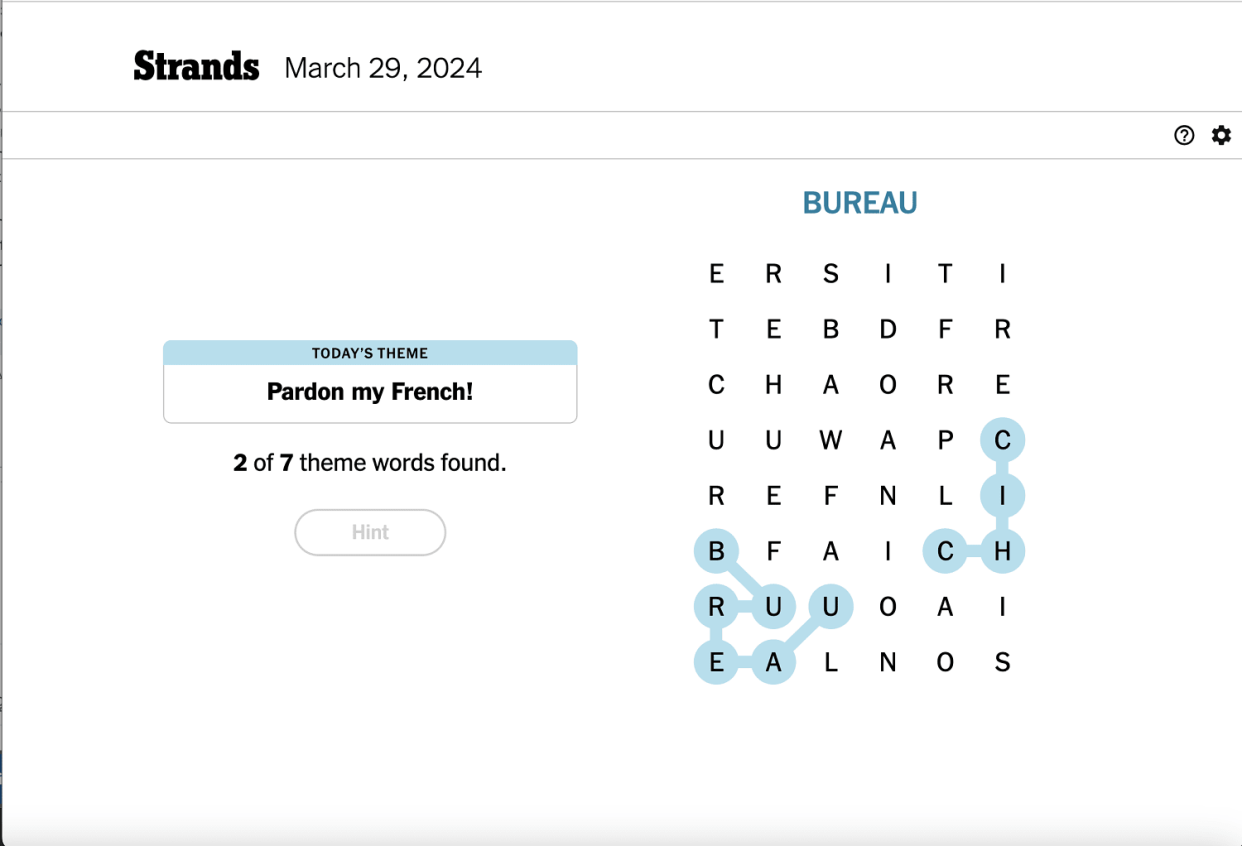
Players also must find a special word called a “spangram,” which defines the theme and will light up in yellow when found. The spangram can be two words and will always touch two opposite sides of the board.
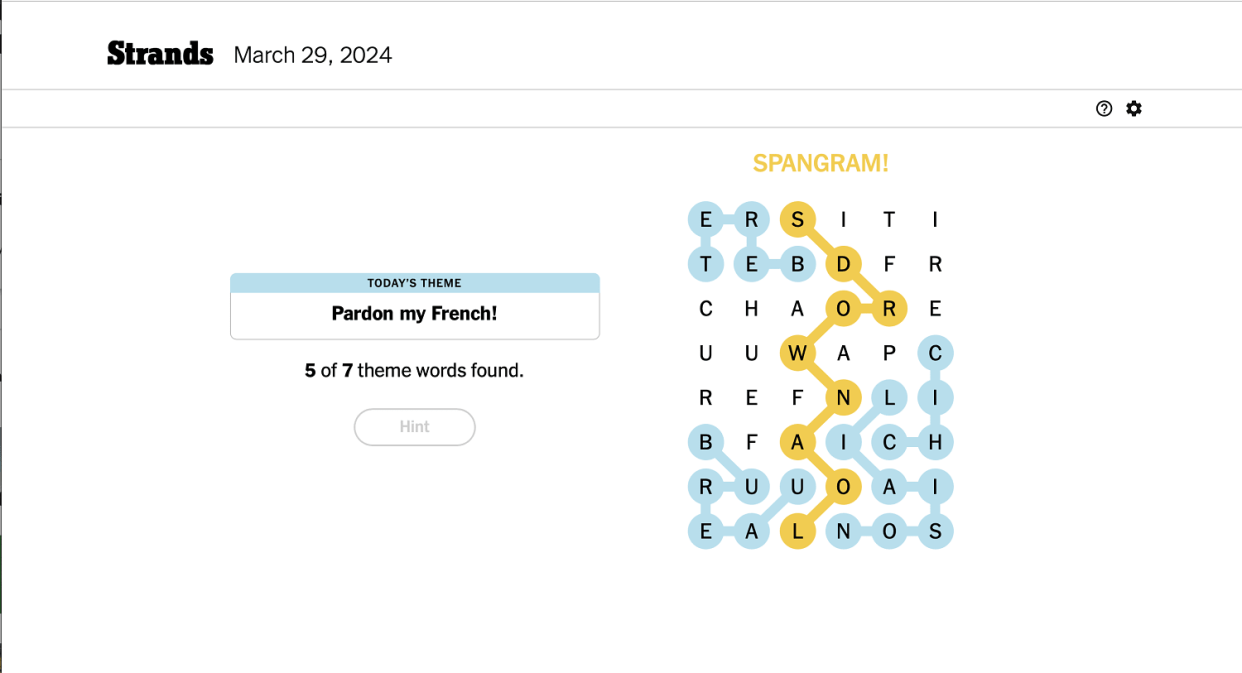
The theme words plus the spangram will highlight the board entirely, and there will be no leftover letters in a completed puzzle.
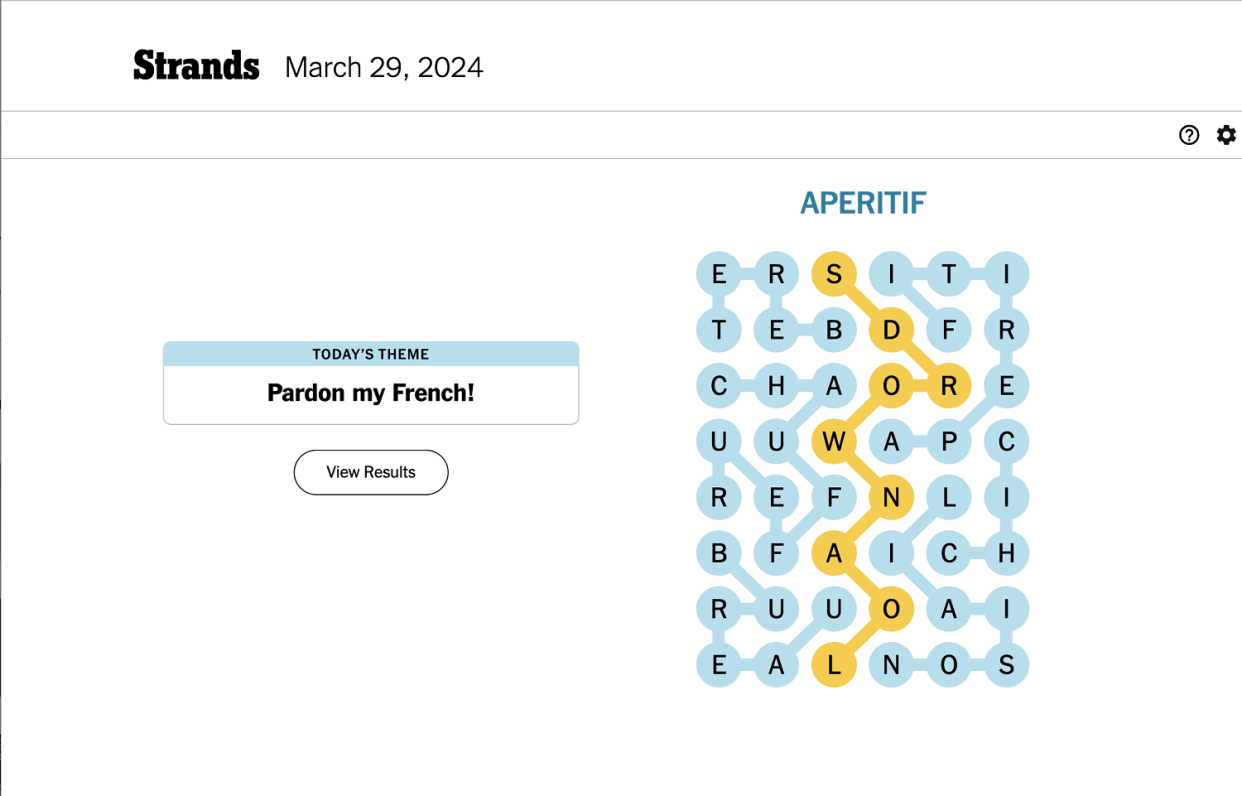
How to find hints
With its roots in the traditional word search, Strands offers some reward for finding words, even if it's not one of the target theme words (or has nothing to do with the theme at all.)
If players are at a loss for theme words, finding any three words will lead to the option to ask for a hint. By clicking "hint," letters on the board will light up in a blue outline. These are the letters of one of the game's theme words, but it's up to the player to unscramble it.
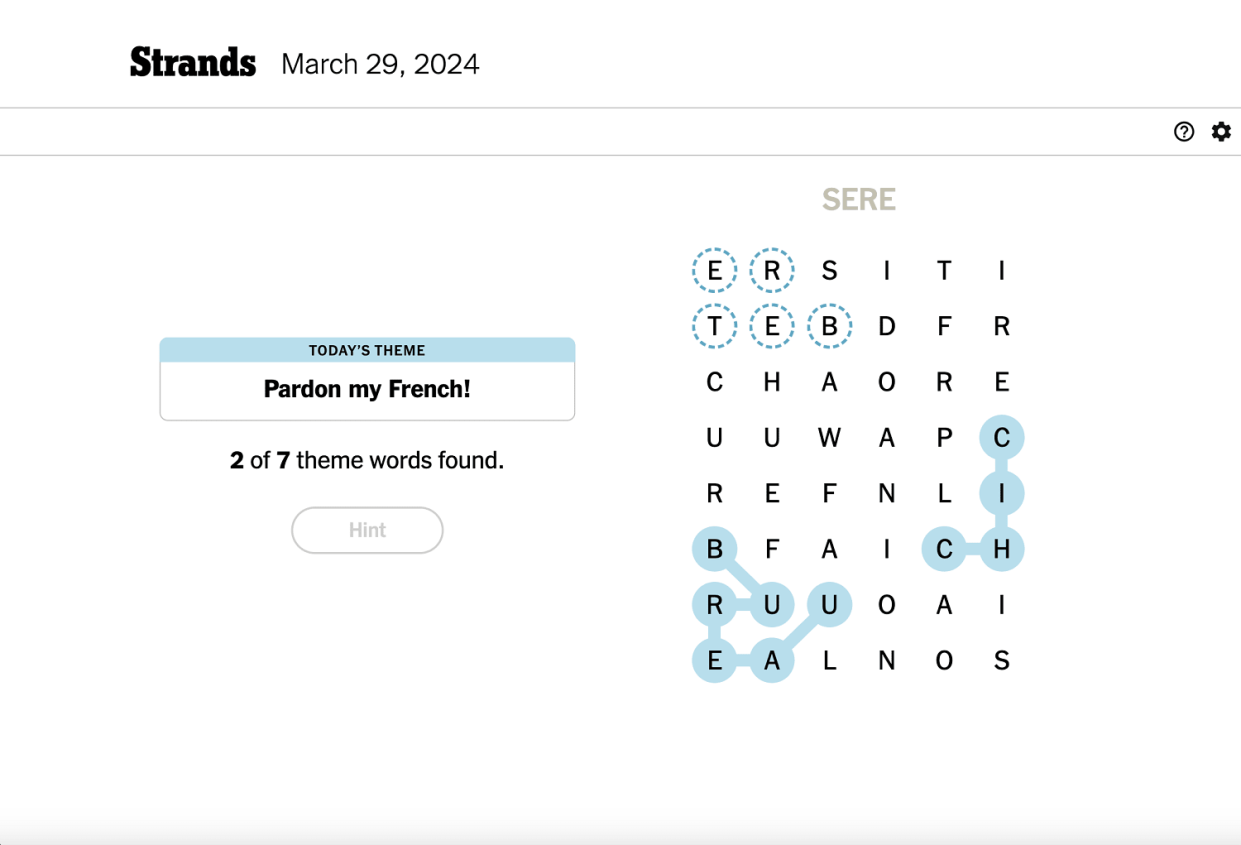
Celebrating your win
For some puzzlers, it's not enough to just complete a NYT puzzle. Half of the fun can be publicizing your win to friends, family and the rest of the internet.
Both Wordle and Connections convert results into a series of colorful emoji that convey how a player progressed through the puzzle without giving away the answers. Strands offers the same feature.
Results are conveys by a series of emoji. A blue dot represents a player finding a theme word, while a light bulb signifies a player using a hint. When the yellow dot appears, the player found a spangram.
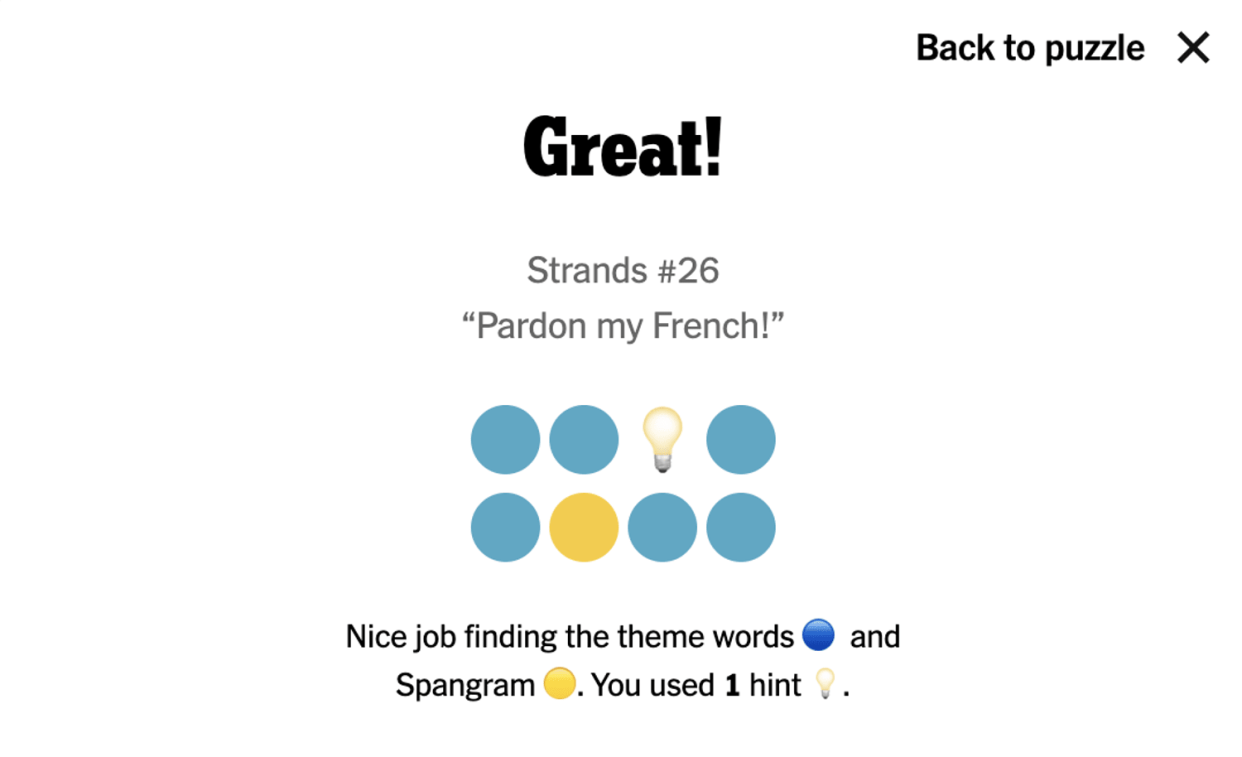
Unlike Wordle and Connections, which measures in how many tries users solved the puzzle, or the crossword and its timer feature, it's hard to compare Strands performances.
So far, the use of hints seems to distinguish the casual from the expert Strands player. At the beginning, a player may need to use hints to sort out a tricky theme.
Can you complete a Strands puzzle hint-free?
This article was originally published on TODAY.com
